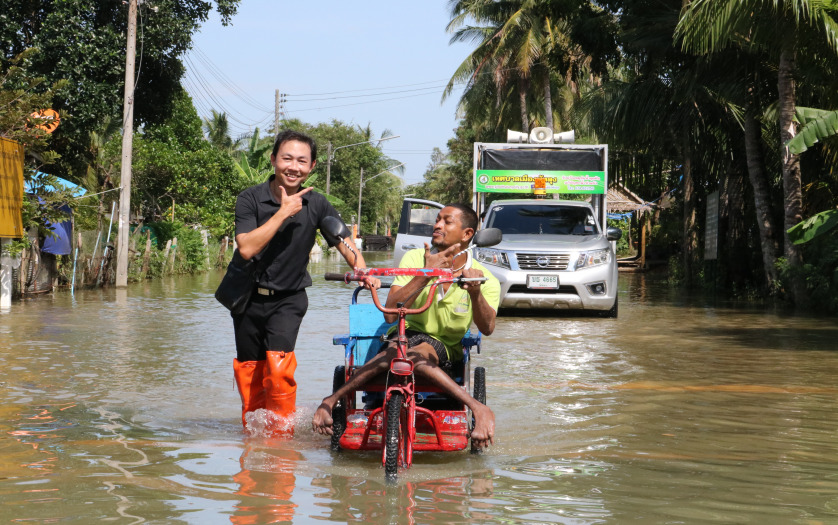Four practical tips for people with disabilities when dealing with a flood

While not something we give much thought to in our day-to-day lives, flooding has the potential to wreak havoc if you’re not prepared. In England alone, as many as 5.2 million homes are constantly at risk of flooding.
The challenges of dealing with a sudden surge of water are hard enough for anyone, but that hurdle can be made all the more alarming for someone with disabilities. Natural disasters are confusing, scary, and difficult to process. Factoring in accessibility requirements or a learning disability can make them even tougher to manage.
Today, we’re going to assess four practical tips for anyone with disabilities when dealing with a flood. While we hope you’ll never need to use these, be sure to keep them in mind.
Prepare for the flood ahead of time
If you fail to prepare, you’re preparing to fail. It’s an old cliche, but there’s plenty of truth to it. While prepping for a flood shouldn’t consume your time, it’s helpful for a person with disability and their carer to sit down and go over every step to take in the event of one happening.
One of the best ways to do this is by creating a flood preparation checklist. Here are some practical steps to keep in mind:
- Create a list of emergency contact details
- Put together an emergency flood kit
- Find out how to turn off gas and water supplies quickly
- Identify want items you want to evacuate
- Create an evacuation plan
Set up a personal support network
While a person with special needs might reside with a live-in carer, it could also be the case they’re independent enough to live alone. In the event that they don’t have someone immediately to hand to help them, create a comprehensive support network for them to reach out to.
This won’t just help during the flood itself, but will also serve as a means of support in the aftermath too. This provides not only physical help, but also peace of mind during what is a stressful time.
Create a solid evacuation plan
One of the most important factors in any flood-related scenario is your evacuation plan. Despite the obvious need for this to be taken into account for people with special needs, one report found that just 20% of people with disabilities are able to immediately evacuate in the event of a disaster.
Each plan is going to be different. You’ll have to tailor it to the abilities of the special needs person, as well as the ease of movement in their home. Make sure to run through the plan with them, and practice evacuating. If you think it would be less intimidating, try to frame it in the style of a game.
Communicate on a level that they will understand
You know better than anyone what your loved one with disabilities is or isn’t going to be able to comprehend. Floods are a slightly odd concept to grasp. After all, we don’t have to deal with excess levels of water pouring into our homes very often.
Give them practical, digestible examples of why a flood is dangerous. For example, you could explain using a bath how six inches of moving water is enough to knock a person over, or how 2 feet of a fast current can move a car.
Communicate in a way which you know will get through to them the importance of the prep work you’re doing.
Do you feel like you’re more prepared to help someone with disabilities in the event of a flood? Make sure to bookmark this guide to help with any potential floods heading forwards.






